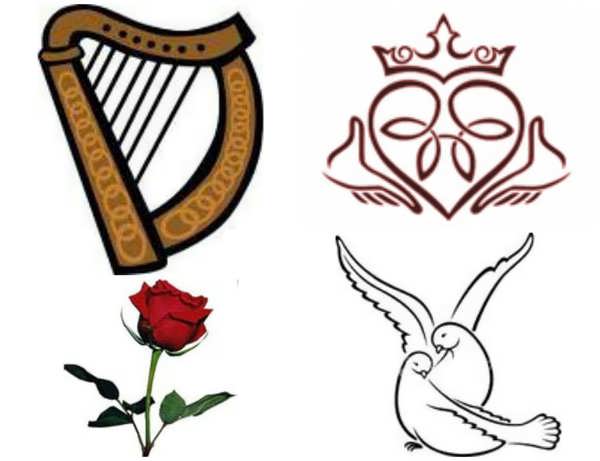Love is a beautiful thing… Many people, when in love, offer symbols of love to their partner to express their love. There are many ways to express love to someone, and symbols can often help people to express their love. Through the ages, some love symbols have stood the test of time. Take, for example, the heart; this symbol has been around for a very long time.
Love symbols can also be symbols that are not widely known today as love symbols. If you want to be in love, you can place a symbol near you that helps you focus on attracting love in your life. You can meditate with this symbol in mind, and it will help you attract the love that you want.
Love symbols take us on a fun ride of expressing ourselves; when you give out a symbol of love, you are expressing deep emotions. These emotions are often more easily expressed by using love symbols. In a way, love symbols help us more easily express how we feel about other people.
Here are some of the most popular Love Symbols.
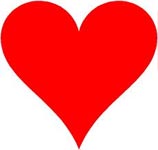 Heart – When people think of love, the first symbol that comes to mind is most probably the heart. It has been around for years as a symbol of love. The heart can be given to people through boxes of candy shaped like hearts, printed on cards, and even on tattoos. The heart has long been used as a symbol to refer to the spiritual, emotional, moral, and, in the past also, the intellectual core of a human being. Heart – When people think of love, the first symbol that comes to mind is most probably the heart. It has been around for years as a symbol of love. The heart can be given to people through boxes of candy shaped like hearts, printed on cards, and even on tattoos. The heart has long been used as a symbol to refer to the spiritual, emotional, moral, and, in the past also, the intellectual core of a human being. |
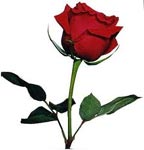 Roses – Roses have been long used as symbols in a number of societies. Roses are ancient symbols of love and beauty. Rose means pink or red in various languages (such as Romance languages, Greek, and Polish). The rose was sacred to a number of goddesses (including Isis and Aphrodite) and is often used as a symbol of the Virgin Mary. The ancient Greeks and Romans identified the rose with their goddesses of love, Aphrodite and Venus. In Rome, a wild rose would be placed on the door of a room where secret or confidential matters were discussed. Early Christians identified the rose’s five petals with Christ’s five wounds. Despite this interpretation, their leaders hesitated to adopt it because of its association with Roman excesses and pagan rituals. The red rose was eventually adopted as a symbol of the blood of the Christian martyrs. Roses also later came to be associated with the Virgin Mary. Roses – Roses have been long used as symbols in a number of societies. Roses are ancient symbols of love and beauty. Rose means pink or red in various languages (such as Romance languages, Greek, and Polish). The rose was sacred to a number of goddesses (including Isis and Aphrodite) and is often used as a symbol of the Virgin Mary. The ancient Greeks and Romans identified the rose with their goddesses of love, Aphrodite and Venus. In Rome, a wild rose would be placed on the door of a room where secret or confidential matters were discussed. Early Christians identified the rose’s five petals with Christ’s five wounds. Despite this interpretation, their leaders hesitated to adopt it because of its association with Roman excesses and pagan rituals. The red rose was eventually adopted as a symbol of the blood of the Christian martyrs. Roses also later came to be associated with the Virgin Mary. |
 Ribbons, Laces, and Frills – Ribbons and frills have long been associated with romance since the days of knighthood when a knight rode into battle with a ribbon or scarf given him by his fair lady. The dictionary states that the word “Lace” comes from a Latin word meaning to “snare” or “noose”. Hundred of years ago, a woman dropped her laced handkerchief in hopes that a man would pick it up and give it to her. This would mean that the man was interested in her. The woman would do this to attract his attention to encourage romance. Boxes of chocolate and Valentine’s cards are also decorated with lace. Ribbons, Laces, and Frills – Ribbons and frills have long been associated with romance since the days of knighthood when a knight rode into battle with a ribbon or scarf given him by his fair lady. The dictionary states that the word “Lace” comes from a Latin word meaning to “snare” or “noose”. Hundred of years ago, a woman dropped her laced handkerchief in hopes that a man would pick it up and give it to her. This would mean that the man was interested in her. The woman would do this to attract his attention to encourage romance. Boxes of chocolate and Valentine’s cards are also decorated with lace. |
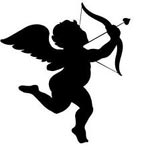 Cupid – In Roman mythology, Cupid is the god of desire, affection, and erotic love. He is the son of the goddess Venus and the god Mars. In popular culture, Cupid is frequently shown shooting his bow to inspire romantic love, often as an icon of Valentine’s Day. He is now in the current culture the personification of love and courtship in general. In the Roman version, Cupid was the son of Venus (goddess of love) and Mars. In the Greek version, he was named Eros and seen as one of the primordial gods (though other myths also exist). Cupid was often depicted with wings, a bow, and a quiver of arrows. Cupid – In Roman mythology, Cupid is the god of desire, affection, and erotic love. He is the son of the goddess Venus and the god Mars. In popular culture, Cupid is frequently shown shooting his bow to inspire romantic love, often as an icon of Valentine’s Day. He is now in the current culture the personification of love and courtship in general. In the Roman version, Cupid was the son of Venus (goddess of love) and Mars. In the Greek version, he was named Eros and seen as one of the primordial gods (though other myths also exist). Cupid was often depicted with wings, a bow, and a quiver of arrows. |
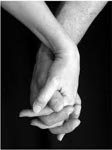 Hands – Clasped hands represent those of Queen Victoria and Prince Albert and were symbols of the friendship between their countries of Germany and England. Years ago, when a man proposed marriage to a woman, he asked for her hand. The hand then became a symbol of marriage and love. Hands – Clasped hands represent those of Queen Victoria and Prince Albert and were symbols of the friendship between their countries of Germany and England. Years ago, when a man proposed marriage to a woman, he asked for her hand. The hand then became a symbol of marriage and love. |
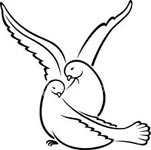 Doves and pigeons mate for life and, therefore, were used as a symbol of “fidelity.” Doves and pigeons mate for life and, therefore, were used as a symbol of “fidelity.” |
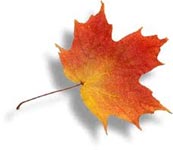 Maple Leaf – In China and Japan, the Maple Leaf is a well-known emblem of lovers. North American settlers used to place the maple leaves at the foot of their beds to ward off demons and encourage sexual pleasure as well as peaceful sleep. Also, in the North American region, the stork can be observed weaving maple branches in nests – hence, the maple became a symbol of the love found in welcoming a new child into the home. Just as the sweet, rich sap produces maple syrup, the maple leaf also serves as a love symbol, as it depicts the sweetness and wonder of love in everyday life. Maple Leaf – In China and Japan, the Maple Leaf is a well-known emblem of lovers. North American settlers used to place the maple leaves at the foot of their beds to ward off demons and encourage sexual pleasure as well as peaceful sleep. Also, in the North American region, the stork can be observed weaving maple branches in nests – hence, the maple became a symbol of the love found in welcoming a new child into the home. Just as the sweet, rich sap produces maple syrup, the maple leaf also serves as a love symbol, as it depicts the sweetness and wonder of love in everyday life. |
 Apple – In early Greek history, the apple was prominent in courtship as well as the rites and customs of marriage. A happy couple in the seventh century B.C. might share an apple as a symbol of their marriage and hopes for a fruitful relationship. Apple – In early Greek history, the apple was prominent in courtship as well as the rites and customs of marriage. A happy couple in the seventh century B.C. might share an apple as a symbol of their marriage and hopes for a fruitful relationship. |
 The Swan – The Swan holds a number of different representations, including love, grace, purity, beauty, and sincerity. The Swan is another Virgin Mary symbol representing her purity and love. The Swan – The Swan holds a number of different representations, including love, grace, purity, beauty, and sincerity. The Swan is another Virgin Mary symbol representing her purity and love. |
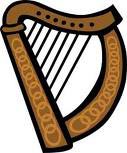 The Harp – The Harp is a well-known symbol of love in the form of lyrical art, poetry, and music. Long ago, King David played the harp to the Lord to express his devotion and love. The Harp – The Harp is a well-known symbol of love in the form of lyrical art, poetry, and music. Long ago, King David played the harp to the Lord to express his devotion and love. |
 Shell: The Shell, with its hard casing inside, which protects life in the form of pearls, symbolizes the protective aspect of love. It has had slightly varying symbolism in different cultures. Seashells were considered to be representative of regeneration by the Romans. The Roman Goddess of love and fertility, Venus, is often depicted as emerging from a scallop shell after being made from the foam the shell carried ashore. The ancient Hindus have associated the conch shell with calling out to love-filled hearts and awakening the hearts of the faithful. The Native Americans have also used seashells to symbolize fertility and love. Shell: The Shell, with its hard casing inside, which protects life in the form of pearls, symbolizes the protective aspect of love. It has had slightly varying symbolism in different cultures. Seashells were considered to be representative of regeneration by the Romans. The Roman Goddess of love and fertility, Venus, is often depicted as emerging from a scallop shell after being made from the foam the shell carried ashore. The ancient Hindus have associated the conch shell with calling out to love-filled hearts and awakening the hearts of the faithful. The Native Americans have also used seashells to symbolize fertility and love. |
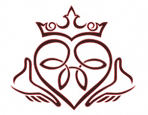 Claddagh Symbol: The Claddagh is an Irish love symbol. There are three components in the Claddagh symbol: the crown symbolizes loyalty, the heart represents love, and the two hands symbolize friendship. The Claddagh symbol is widely used in Celtic jewelry, like pendants, rings, earrings, and charms. A traditional jewelry piece is the Claddagh ring, which is commonly used as a wedding or engagement ring and sometimes as a friendship ring. Its origin is traced to Claddagh, an Irish fishing village located near the city of Galway. Claddagh Symbol: The Claddagh is an Irish love symbol. There are three components in the Claddagh symbol: the crown symbolizes loyalty, the heart represents love, and the two hands symbolize friendship. The Claddagh symbol is widely used in Celtic jewelry, like pendants, rings, earrings, and charms. A traditional jewelry piece is the Claddagh ring, which is commonly used as a wedding or engagement ring and sometimes as a friendship ring. Its origin is traced to Claddagh, an Irish fishing village located near the city of Galway. |

